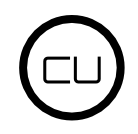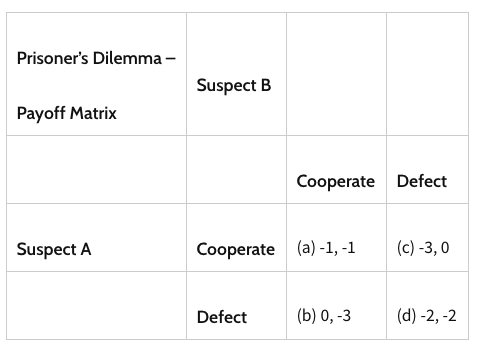For far too long, the gospel of “move fast and break things” has dictated the rhythm of product development, especially in Big Tech. It wasn’t just a catchy slogan; it was a fundamental, often flawed, philosophy. User experience (UX) research? Too often relegated to a rubber stamp, validating predetermined instincts rather than challenging them. Behavioral analysis? A perpetual rearview mirror, confirming what users did, rather than anticipating what they shouldn’t have to do, or what profound influence our creations might wield.
This backward approach, ironically, now faces its ultimate test: Artificial Intelligence.
AI products aren’t passive tools. Large language models, predictive algorithms, and personalized recommendation engines don’t merely respond to users; they co-create experience. They shape behavior with an intimacy and scale we’ve never before witnessed. Yet, here we are, attempting to apply the lagging UX processes of a bygone era to the most leading-edge technology humanity has ever conceived. It’s like trying to navigate a hyperspace jump with a map drawn for a horse and buggy.
The Headlights We Desperately Need
The stakes are no longer just about usability; they’re about humanity. When design fails in the age of AI, the consequences aren’t minor inconveniences. We’re talking algorithmic harm, embedded discrimination, the rampant spread of disinformation, and a deep, systemic erosion of trust.
Consider the landscape: AI systems are increasingly mediating our most fundamental human experiences. They:
- Personalize education, finance, healthcare, and justice.
- Predict and influence our mental health, moods, and purchasing.
- Mediate interpersonal relationships — from dating apps to social feeds.
To continue treating human insight as an afterthought in this context isn’t just negligent; it’s dangerous. We need a fundamental shift in perspective. UX and behavioral research must become the headlights of AI product development, proactively illuminating the treacherous road ahead. We can no longer afford to learn from where we’ve already crashed.
From MVP to MAP: Orienting Ourselves in a New Reality
The traditional product playbook preaches the gospel of the Minimum Viable Product (MVP): build something simple, get it to market fast, and learn from user feedback. A noble idea, perhaps, for a simpler time.
But with AI, “learning from failure” takes on a chilling new meaning. It can translate directly into:
- Reinforcing societal biases at scale.
- Violating privacy with unprecedented reach.
- Misleading users into financial or emotional distress.
- It scales misinformation or addiction loops with devastating efficiency.
Failure here isn’t just a costly pivot; it’s a profound ethical and societal liability.
This is precisely why we must abandon the MVP mindset for something far more critical: the Minimum Aligned Product (MAP).
A MAP isn’t just “viable”; it’s oriented. It’s built with intentional alignment:
- Aligned with user values, not just their clicks.
- Aligned with cognitive and emotional safety – a non-negotiable baseline.
- Aligned with social, ethical, and cultural expectations – understanding context before deployment.
- Informed by probabilistic models of user behavior before launch – anticipating impact, not just reacting to it.
MVPs are about iteration. MAPs are about orientation. One risks incremental improvements; the other guards against catastrophic misdirection.
Introducing HAI/UX: A Compass for Human-AI Insight and Experience
To operationalize this critical shift, we propose HAI/UX – a framework for Human-AI Insight and Experience. This framework elevates the role of research and data science from a supporting act to a central, guiding force in AI-driven product development.
- Ethics-Centered Experimentation: A/B testing, in its current form, can be a masterclass in optimizing manipulation. HAI/UX demands ethics red-teaming be woven into the very fabric of experimentation. We must proactively ask: Who might be harmed? What cognitive biases are we unknowingly exploiting? Is consent genuinely clear, or merely a click?
- Continuous Behavioral Forecasting: Forget static personas. We need to leverage large-scale, longitudinal behavioral datasets to predict user adaptation, identify emerging risk patterns, and flag ethical flashpoints before they become crises. Imagine, for instance, forecasting how patients might dangerously overtrust an AI medical chatbot under duress, then designing in deliberate friction to mitigate that risk.
- Probabilistic Personas: The rigid personas of traditional UX are wholly insufficient for AI’s fluidity. We must embrace personas as dynamic, probability fields shaped by context, time, and interaction with AI. A “young voter,” for example, isn’t a single demographic; they’re a complex probability field of disengagement, activism, conspiracy exposure, and curiosity—each activated by different AI nudges. Designing for this variance is paramount.
- Agent Co-Design: As AI agents evolve into co-actors in user journeys, we must pivot from designing for users to prototyping with them. Invite users to co-create with the AI: How should it express uncertainty? When should it ask for permission? Should it reflect user values or challenge them? This isn’t just empathy; it’s essential collaboration.
- Embedded Insight Pipelines: UX and ethical insights cannot remain quarterly reports. They must become live signals, monitored by engineering teams alongside latency and uptime. Design becomes a continuous feedback loop, not a retrospective analysis.
The Broader Implication: Building With People, Not Just For Them
This isn’t merely about tweaking product roadmaps. It’s about fundamentally rethinking how we build systems that impact human lives. HAI/UX shifts the paradigm toward:
- Inclusion: Not a box to tick, but a dynamic, shared governance process.
- Accountability: Researchers as proactive watchdogs, embedded guardians, not just detached observers.
- Trust: Built not through slick PR campaigns, but through transparency, deliberate slow thinking, and a commitment to design justice.
The Call to Action: From Sprints to Stewardship
If we fail to evolve our product strategy, AI will undoubtedly outpace our ability to humanely manage its profound impact. The time for naive optimism or blind acceleration is over.
This means a collective re-orientation:
- Funders must recognize and invest in UX and ethical research as core infrastructure, not disposable overhead.
- Founders must treat behavioral researchers as product architects, not just focus group facilitators.
- Engineers must learn to incorporate friction as a deliberate feature, not merely a bug to be smoothed away.
- Designers must shift their fundamental question from “What’s the fastest way to get here?” to “What’s the safest and most equitable way to bring everyone with us?”
We don’t need to move slower. We need to move smarter. And critically, we need to move with humans firmly at the wheel, not tied up in the trunk.




